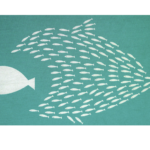
What role for civil society?

The population is still not very well informed about the developments of nanotechnologies, even though they affect everyone’s future. The vagueness and complexity of the nano domain1The term “nanotechnology” is a catch-all word that covers different realities. As underlined by the association Sciences et Démocratie in 2010, this term “adds a layer of complexity to the work of explanation necessary to allow the citizen to apprehend the subject, especially as its definition is still the subject of debate between specialists”. and the opacity that surrounds public decisions as well as the processes used by industrialists hinder the transparency that is necessary in a true democracy.
In 2009-2010, the national public debate on nanotechnologies organized in France revealed the communication difficulties that existed between citizens, administrations, researchers and industrialists on nanos. Citizens have limited access to the elements that have led, or will lead, to the choices concerning the orientations and financing of research, development and commercialization of nanotechnologies and nanomaterials.
The association AVICENN, through the information it makes available to all on this website https://veillenanos.fr and social networks, aims to provide transversal, readable and independent information on nanos and to facilitate the identification of key stakeholders and places where important decisions are made in this vast and complex field. In order to empower citizens, we provide them with the necessary tools to understand the issues at stake so that they can, if they wish, take part in the debates, influence the decisions and act with full knowledge of the facts.
Other stakeholders or programs show a willingness to involve citizens or “the public” in the governance of nanotechnologies, although there is sometimes a risk of instrumentalizing them and vigilance is required. Indeed, if public consultations and debates have made it possible to inform a larger – although still insufficient – number of citizens, the conditions of their implementation are often controversial and their recommendations have been followed by little effect(s)… More effectively, it is through the mobilization of civil society organizations2Cf. Xi Wang, Revisiting “upstream public engagement” in nanotechnologies: from the perspective of the public sphere, Library and information sciences. Université Paul Sabatier – Toulouse III, 2015. that their questions and recommendations can be raised, at least initially, to the decision-making level.
Civil society in nano governance
Other news on the topic
Upcoming Nano Agenda

- E-learning program: awareness-raising for personnel who come into contact with nanomaterials during research, formulation, production, maintenance, cleaning, upkeep, etc., as well as safety coordinators or engineers, facility managers, heads of laboratories where nanoparticles are handled.
- Organizers: INSTN Grenoble (CEA)
- On the program:
- 1 – Introduction, definition and characteristics of nanomaterials
- 2 – Toxicity of nanomaterials: the state of knowledge
- 3 – Metrology and characterization of nanomaterials
- 4 – Prevention and protection against nanomaterials in the workplace
- 5 – Quiz: assessment of learning outcomes
- The 2-hour course can be viewed for one month from the date of registration.
- Website: https://instn.cea.fr/…risques-lies-aux-nanomateriaux…
- Annual conference of the NaMasTE research group (Manufactured Nanomaterials, Toxicology, Ecotoxicology and Risks: towards controlled development)
- Dates: December 9 and 10, 2025
- Organizers: CNRS
- Website: https://namaste2025.sciencesconf.org
- 8th Congress of Occupational Medicine and Health (CNMST 2026)
- Theme 5: Emerging pathologies and risks, Mr Henri Bastos (ANSES), Pr Lynda Bensefa-Colas (AP-HP), Dr Catherine Nisse (CHU Lille)
- Website: www.medecine-sante-travail.com
Notes and references
- 1The term “nanotechnology” is a catch-all word that covers different realities. As underlined by the association Sciences et Démocratie in 2010, this term “adds a layer of complexity to the work of explanation necessary to allow the citizen to apprehend the subject, especially as its definition is still the subject of debate between specialists”.
- 2Cf. Xi Wang, Revisiting “upstream public engagement” in nanotechnologies: from the perspective of the public sphere, Library and information sciences. Université Paul Sabatier – Toulouse III, 2015.



